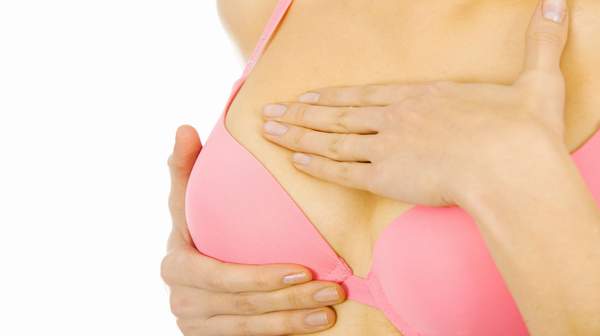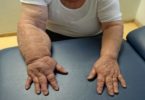What's in this article?
Breast Cysts Overview
Breast cysts are fluid-filled sacs within your breast, which are usually not cancer (benign). You can have one or many breast cysts. They’re often described as round or oval lumps with distinct edges. In texture, a breast cyst usually feels like a grape or a water-filled balloon, but sometimes a breast cyst feels firm.
Breast cysts don’t require treatment unless a cyst is large and painful or otherwise uncomfortable. In that case, draining the fluid from a breast cyst can ease your symptoms.
Breast cysts are common in women before menopause, between ages 35 and 50, but can be found in women of any age. If you have breast cysts, they usually disappear after menopause, unless you’re taking hormone therapy.
Breast Cysts Diagnosed
Cysts are diagnosed by physical exam, medical history, mammography, and ultrasound
Ultrasound is frequently used to tell whether a lump is solid or filled with fluid (a cyst). It is a painless procedure that involves holding a hand-held device against the skin while sound waves are transmitted through the breast.
Breast Cysts Symptoms
Signs and symptoms of breast cysts include:
- A smooth, easily movable round or oval breast lump with distinct edges (which typically, though not always, indicates it’s benign)
- Usually found in one breast, but can affect both breasts at the same time
- Breast pain or tenderness in the area of the breast lump
- Increase in breast lump size and breast tenderness just before your period
- Decrease in breast lump size and resolution of other signs and symptoms after your period
Having one or many simple breast cysts doesn’t increase your risk of breast cancer. But having cysts may interfere with your ability to detect new breast lumps or other abnormal changes that might need to be evaluated by your doctor. It’s important to become familiar with how your breasts normally feel so that you’ll know when something is new or changing or just doesn’t feel right.
Breast Cysts Causes
Each of your breasts contains lobes of glandular tissue, arranged like petals of a daisy. The lobes are further divided into smaller lobules that produce milk during pregnancy and breast-feeding. Small ducts move the milk to your nipple. The supporting tissue that gives the breast its shape is made up of fatty tissue and fibrous connective tissue. Breast cysts develop when an overgrowth of glands and connective tissue (fibrocystic changes) block milk ducts, causing them to widen (dilate) and fill with fluid.
- Microcysts are too small to feel, but may be seen during imaging tests, such as mammography or ultrasound.
- Macrocysts are large enough to be felt and can grow to about 1 to 2 inches (2.5 to 5 centimeters) in diameter. Large breast cysts can put pressure on nearby breast tissue, causing breast pain or discomfort.
The cause of breast cysts remains unknown. Some evidence suggests that excess estrogen in your body, which can stimulate the breast tissue, may play a role in breast cyst development.
Treatment for Breast Cysts
Your doctor must determine the cause of your breast lump before he or she can formulate a treatment plan. Not all breast lumps will need treatment.
If you have a breast infection, your doctor will probably prescribe antibiotics to cure it. If you have a cyst, it can be drained of fluids. Usually, cysts will go away after they’re drained.
If the lump is found to be breast cancer, treatment can include:
- lumpectomy (removal of the lump)
- mastectomy (removal of the breast)
- chemotherapy (the use of drugs to fight or destroy the cancer)
- radiation (the use of radioactive rays or materials to fight the cancer)
Your treatment will depend on the type of breast cancer you have, the size and location of the tumor, and whether the cancer has spread beyond your breast.





